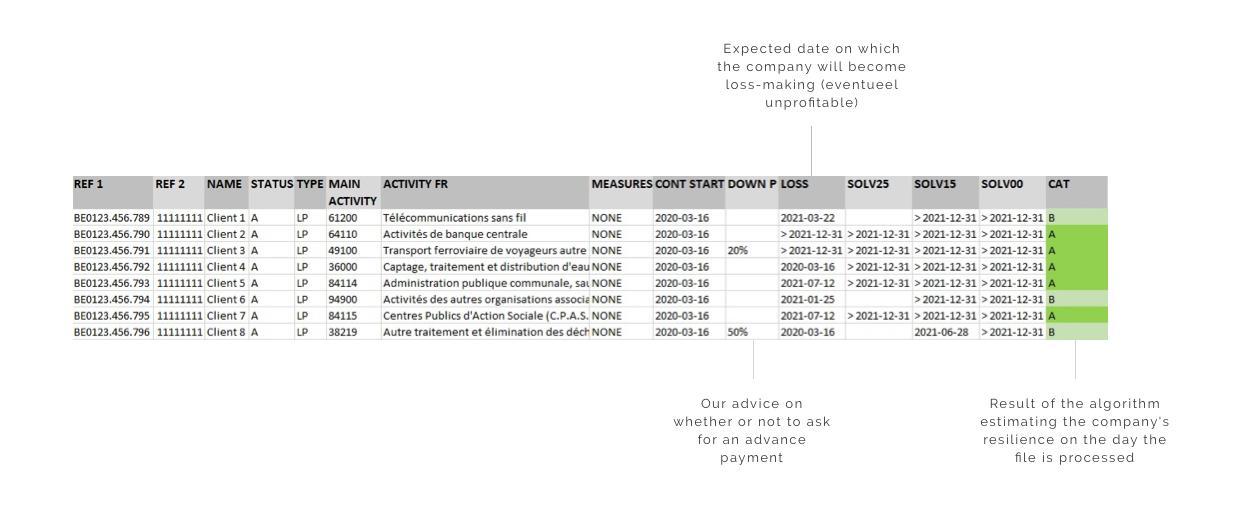Easily test
your customer base and
request information immediately
Provide a file
with CBE numbers
you wish to test
Receive a
detailed report
tailored to you
Why is this test important?
The COVID-19 crisis is having a huge impact on business. Companies were obliged to close, and employees found themselves in a totally different working environment. This situation led to a whole host of economic and financial uncertainties, primarily concerning a business’ liquidity and solvency. This is why Trends Business Information has developed a new score model, allowing you to gain insight into the resilience of your business partners, customers and suppliers.
NB: Knowing that almost 30% of Belgian businesses have a solvency ratio below 15%, this question is no longer irrelevant, but essential. After all, these businesses are in the imminent-bankruptcy danger zone.

A new bank calculation is performed each time the new balance sheets are published.

What does this mean specifically for you?

The timeline indicates when the company changes category based on our calculations, giving you an idea of their resilience.
We divide companies into four categories:
Category A: A company in category A has solvency of ≥ 25%. This means it has a healthy balance between its own and borrowed financial resources.
Category B: A company with solvency of 15% and 25% is deemed as vulnerable. The balance between its own and borrowed financial resources is fragile.
Category C: A company with solvency of 0% and 15% is deemed as highly vulnerable. The debt burden is too high. We recommend you observe caution when granting commercial credit.
Category D: A company with negative solvency is virtually bankrupt. This means they have more debts than their balance-sheet total. These companies are not creditworthy.
What will be the impact of the crisis?
The impact of the coronavirus crisis is set to reverberate for quite some time, also affecting companies’ resilience in the long term. In an initial phase a lack of liquidity arises, affecting resources for immediately meeting ongoing payment obligations as a whole. For many sectors, this is now already a reality. In a second phase, companies will have to refinance their activity and rely on capital made available by third parties. In that phase, companies are confronted with solvency issues.
Solvency stress test
In order to gauge the impact, we calculate in various stages how many weeks a company can lose adjusted added value before slipping below the sensitive threshold of insufficient solvency. We have set those thresholds at 25%,15% and 0%. The basic calculation continues to 16 weeks, and ceases sector by sector after the lockdown.
Dual liquidity assessment test
Dual liquidity test means we analyse how trade-cycle declaration impacts on companies’ abilities to pay. For instance, if too much money is immobilised in customer receivables (outside crisis context), once the company’s trade cycle comes to a halt and the customers started paying later, it will no longer have money to finance everything else: general expenses, credit-line redemptions and suppliers.
Why have a separate score?
Exceptional times call for exceptional measures. The resilience score takes specific coronavirus measures into account, such as additional subsidies and compulsory closures. Companies not publishing financial figures also receive a score based on the sector median. The separate indicator in a straightforward graph means you can easily interpret the situation for each company.
Any questions?
Trends Business Information is ready to support you
Haven’t you found what you were looking for? No problem, our team of motivated employees behind the scenes will do everything in its power to help you.